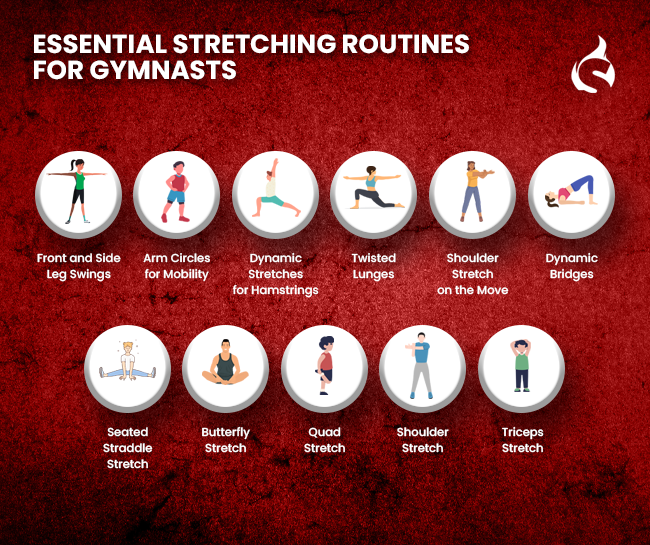Bragging Rights
Explore the latest trends, tips, and stories that make you stand out.
Stretch It Like You Mean It
Unlock your body's potential with powerful stretching tips! Discover techniques that elevate performance and enhance flexibility—stretch it like you mean it!
The Benefits of Stretching: Why You Should Stretch Daily
The benefits of stretching are often overlooked, yet incorporating a daily stretching routine can significantly enhance your overall well-being. By improving flexibility, stretching helps to increase your range of motion, which can lead to better performance in physical activities. Furthermore, regular stretching can mitigate injury risks by preparing your muscles and joints for the demands of your day-to-day activities. It also promotes better posture, alleviating tension and discomfort in the back and neck areas, potentially reducing the likelihood of chronic pain.
Beyond physical improvements, stretching daily has mental health benefits as well. Engaging in a stretching routine can serve as a form of meditation, helping to reduce stress and promote relaxation. As you stretch, taking deep breaths and focusing on your body can enhance your mind-body connection, leading to increased mental clarity and emotional balance. Consider incorporating a mix of static and dynamic stretches into your routine to reap these benefits fully.

How to Properly Incorporate Stretching into Your Workout Routine
Integrating stretching into your workout routine is essential for enhancing flexibility and preventing injuries. Start your session with a dynamic stretching routine, which involves movements that increase your heart rate and warm up your muscles. Examples of dynamic stretches include leg swings, arm circles, and walking lunges. These movements prepare your body for the workout ahead, allowing for improved performance and reduced risk of strains. A good guideline is to aim for about 5 to 10 minutes of dynamic stretching before engaging in your main workout.
After your workout, it's crucial to incorporate static stretching to aid in recovery and maintain flexibility. Focus on stretching all major muscle groups and hold each stretch for 20-30 seconds to allow for maximum effectiveness. This cooldown phase not only helps in the alleviation of post-exercise soreness but also promotes better muscle elasticity over time. To establish a well-rounded routine, consider creating a list of stretches targeting key areas such as the hamstrings, quadriceps, and hip flexors, and make it a habit to complete this regimen consistently.
Common Stretching Mistakes and How to Avoid Them
Stretching is an essential component of any fitness routine, yet many individuals make common stretching mistakes that can lead to injury or diminish the effectiveness of their efforts. One prevalent error is overstretching, where individuals push their muscles beyond their limits in the quest for flexibility. This can cause micro-tears in the muscle fibers, leading to painful injuries. To avoid this mistake, it’s important to listen to your body and respect its limits; stretching should create a feeling of tension, not pain.
Another common mistake is failing to warm up before stretching. Jumping straight into stretches without a proper warm-up can lead to muscle strain and reduce overall performance. A good warm-up increases blood flow to the muscles, making them more pliable. Consider doing light aerobic activities, such as jogging or brisk walking, for 5-10 minutes before stretching. Additionally, remember to hold each stretch for at least 15-30 seconds without bouncing, as this promotes better muscle elongation without risk of injury.